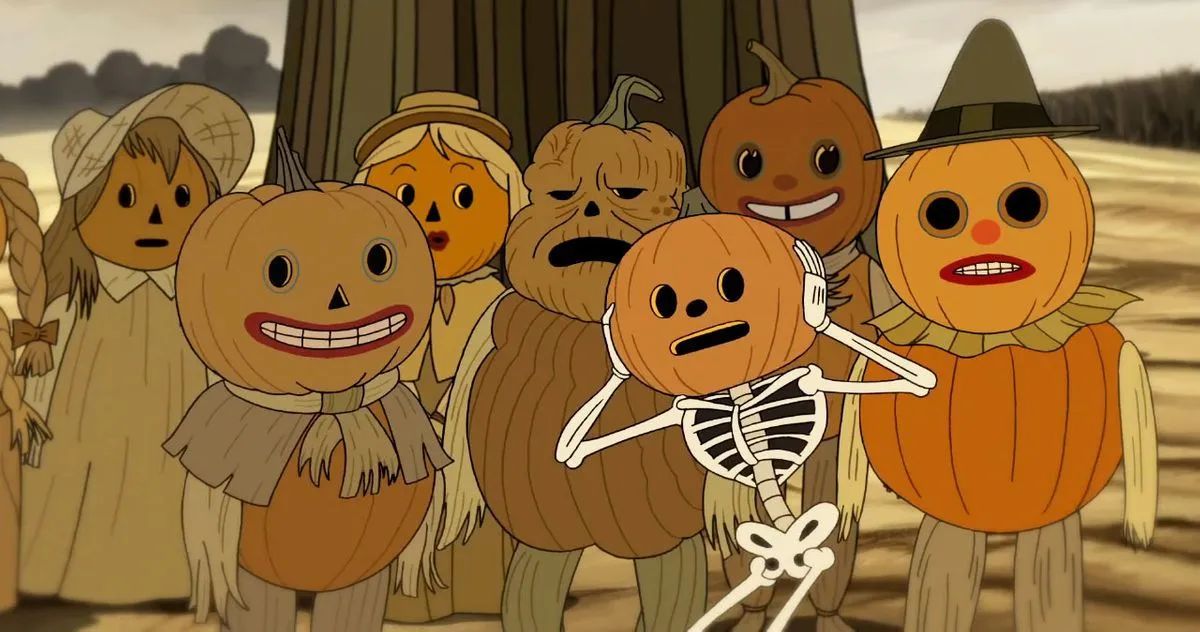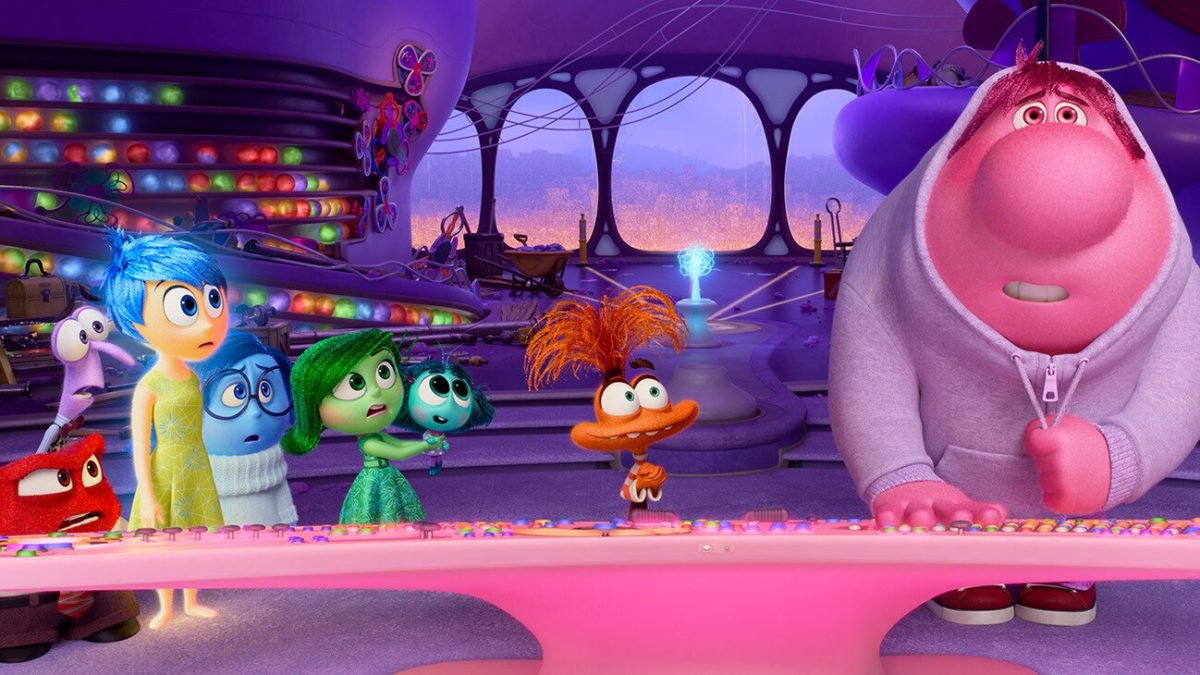This review contains spoilers.
The year is 2014, and Cartoon Network is smack-dab in the middle of a renaissance. When in one calendar year you can count upon the likes of “Steven Universe,” “The Amazing World of Gumball,” “Regular Show,” “Adventure Time,” and “Clarence” to keep your company afloat, it’ll soar. Cartoon Network had a herd of cash cows at their disposal, and certainly wasn’t lacking in the creativity department. Take one look online, and the number of children who grew up in this period as fans is apparent. I was one of them, if you couldn’t already tell.
During this time, I believed that Cartoon Network could do no wrong. They could probably air “Johnny Test” again, and I’d eat it up on my afternoons. It was this environment in which a strange new Cartoon Network miniseries was announced for November 2014. A few promos ran occasionally, but there was not much in the way of telling the audience what the series was about. Well, November 2014 came and went, and I was still on the floor puking out oak leaves and cinnamon sticks. If you’ve never heard of it and want something quintessential for the autumn season, “Over The Garden Wall” will scratch that itch.
ART STYLE
We cannot talk about “Over The Garden Wall” without considering the unique art style because it is amazing. Especially in the Northeast, which has all four seasons, the idea of autumn is not difficult to conjure.
While a stroll out to a secluded forest or a walk through town may be someone’s idea of autumn, mine is more often than not attached to paintings, specifically those generic, can’t-really-place-the-painter autumn landscapes — a lonely trail in the woods, smattered by leaf piles and rocks and an unattended pumpkin patch, ready for harvest. These paintings, where I feel as though I can jump in and live rustic fantasies, are my idea of autumn.
Much like that platonic ideal, watching this show feels like I’m watching characters within their own autumn painting. The style of adding animation to otherwise still and painting-style settings just has a way of scratching the itch in my brain, reminding me of a cozy Studio Ghibli film.
I could gush on about the other visuals in this show. The little details that the animators put into close-up shots, specifically of the show’s antagonist The Beast, just ooze effort and care. The warm colors at the start of the show slowly drifting to darker tones by the end is a perfect metaphor for the protagonists’ journey into the Unknown, as well as their own journey through death and growing up.
Finally, the more modern, thin-line style used for the characters in contrast with the background gives a feeling of displacement within the show, as if the characters don’t exactly fit with the world they’re put in — which, you know, they shouldn’t.
PLOT
On Halloween night, brothers Greg and Wirt wander into the forest and get lost in an area called the Unknown. Through the help of a talking bluebird named Beatrice and numerous people, animals, and objects they meet along the way, the brothers eventually find their way home. It is a straightforward premise, but as is the case with most of these types of shows, the meat in between really differentiates it.
Personally, I found most of the character arcs in this show to be fulfilling. There were emotional moments sprinkled in, especially towards the end, which I enjoyed. The singular story arc of the protagonists getting home was also fun to follow throughout. It’s surprising how this one premise can get bent and twisted into 10 episodes.
The ending of the show itself… is something I go back and forth on constantly. Don’t get me wrong, I was satisfied with how it ended. Happy endings are cool, you know, and especially when they are made meaningful by the journey that the characters went through. However, I do wish they handled the protagonists’ eventual triumph over the Beast a little better.
It felt like they were building up to a dramatic, morally-gray decision that Wirt would have to make, with the life of his brother Greg in his hands. Then that inflating balloon of drama just gets popped nonchalantly. The story eventually worked itself out for the characters, but I couldn’t help but feel robbed of a dramatic final conclusion.
CHARACTERS
As I’ve said before, most of the character arcs are just fine in this show. They are not as developed and thorough as they could be, but what can one really expect from a miniseries?
Standout characters have to include Beatrice, a witty bird with a sad backstory. Wirt could also qualify; he’s a really dramatic, artsy guy stuck in the woods with his brother. The relationship between the Woodsman and the Beast is a treat, especially when you look back into the history of the Woodsman’s lantern. Finally, Fred the Horse gets this last spot. He’s just hilarious in the two episodes he’s in.
MUSIC
This soundtrack feels like one to old, vintage Americana. Really, it’s more like a theoretical Americana with little to no problematic events to sift through! Taking inspiration from old ragtime music, jazz, and traditional folk songs, it had me crawling up the walls with how lushly produced it is.
In the opening track “Prelude,” where an entire string quartet performed by The Blasting Company drags the audience right into that folk influence. “Pottsfield C.M” is a group vocal ballad, a piece you could imagine townsfolk perform around a bonfire or something. “Potatoes and Molasses” is a goofy song for a goofy mood, meant in the best way possible. The highlight for me is “Over The Garden Wall,” an ensemble piece that involves a bassoon and is sung in the show by Greg’s pet frog!
It’s not all happy good times, though; this soundtrack can get downright creepy. Tracks like “Forward, Oneroi” are much more unsettling once you hear it in the context of the show. Same with “Potatoes Et Molassus,” a genius but also heart-wrenching musical callback. “Come Wayward Souls” is sung by the Beast himself, and the lyrics hint at his endgame for the two brothers. All creepy things must come to an end, however, and “The Clouded Annals of History” brings us to a sweet-sounding rest, just as autumn quietly gives way to winter.
RATING
No show is perfect, but my gosh can an unperfect show still make me feel so many things. Watch this show so I can stop talking about it. 4.5 crabs!































